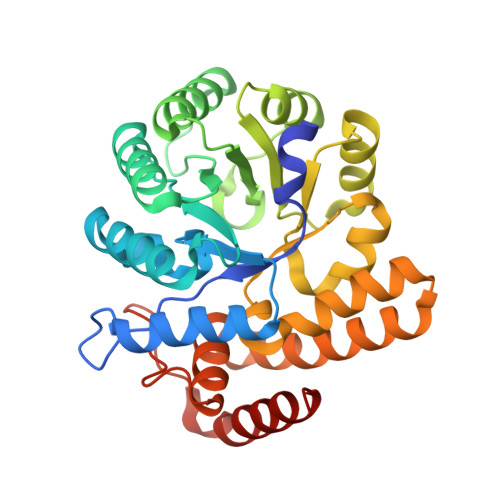Pathological macromolecular crystallographic data affected by twinning, partial-disorder and exhibiting multiple lattices for testing of data processing and refinement tools.
Campeotto, I., Lebedev, A., Schreurs, A.M.M., Kroon-Batenburg, L.M.J., Lowe, E., Phillips, S.E.V., Murshudov, G.N., Pearson, A.R.(2018) Sci Rep 8: 14876-14876
- PubMed: 30291262
- DOI: https://doi.org/10.1038/s41598-018-32962-6
- Primary Citation of Related Structures:
2YGY - PubMed Abstract:
Twinning is a crystal growth anomaly, which has posed a challenge in macromolecular crystallography (MX) since the earliest days. Many approaches have been used to treat twinned data in order to extract structural information. However, in most cases it is usually simpler to rescreen for new crystallization conditions that yield an untwinned crystal form or, if possible, collect data from non-twinned parts of the crystal. Here, we report 11 structures of engineered variants of the E. coli enzyme N-acetyl-neuraminic lyase which, despite twinning and incommensurate modulation, have been successfully indexed, solved and deposited. These structures span a resolution range of 1.45-2.30 Å, which is unusually high for datasets presenting such lattice disorders in MX and therefore these data provide an excellent test set for improving and challenging MX data processing programs.
Organizational Affiliation:
Astbury Centre for Structural Molecular Biology, University of Leeds, Leeds, LS2 9JT, UK. [email protected].
















